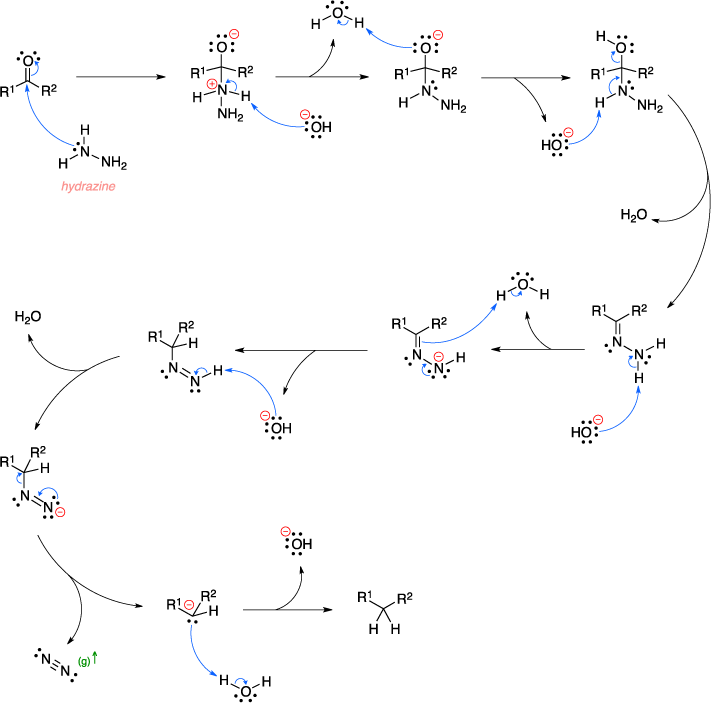Wolff-Kishner reduction

The Wolff-Kishner reduction is an organic reaction used to convert an aldehyde or ketone to an alkane using hydrazine, base, and thermal conditions. The mechanism begins with the attack of hydrazine of the aldehyde or ketone for form an imine. Proton transfer steps then result in the formation of a N=N bond. Deprotonation of the nitrogen and a rearrangement reaction result in the formation of a carbanion and the release of nitrogen gas. The carbanion then picks up a proton from water to regenerate the base catalyst and provides the final alkane product.[1][2]
Mechanism

References:
| 1. |
Kishner, N.
J. Russ. Phys. Chem. Soc.
1911,
43,
582–595.
|
| 2. |
Wolff, L.
Justus Liebigs Ann. Chem.
1912,
394,
86–108.
|